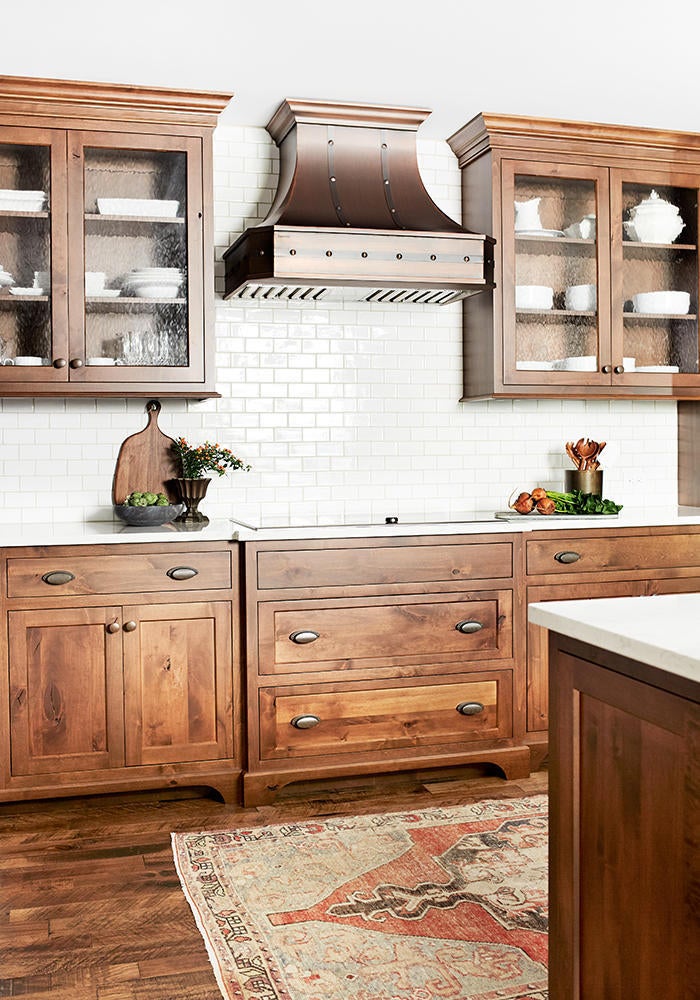Roughly 10 years ago, interior designer and entrepreneur Robin Wilson walked into a meeting with a seed capital organization geared toward women and pitched her home goods business, A Blue Egg Corporation, in the hopes of receiving funding for the growing brand. The meeting was unsuccessful—and to make matters worse, Wilson received some rather unhelpful feedback from one of the women sitting across the table from her.
“[She said], ‘We’ve never seen a brand that looks like you,’” recalls Wilson, who is Black. “I had to politely say, ‘I can’t unzip myself and become a white woman or a white man. And you have seen someone like me: B. Smith or Sheila Bridges. They were just never funded—they had to fund themselves.’”
A decade later, racial prejudice remains, but the range of funding options available to business owners has opened up in new and surprising ways—and so has the world of finance and investment. For one, everyday people have increasingly gotten into the game through mobile-friendly, commission-free online platforms like Robinhood and Public. Elsewhere, legislation has opened up new possibilities. With the Obama administration’s 2016 passage of Title III of the JOBS Act, known as the Regulation Crowdfunding provision, nonaccredited investors could start making online investments at historically low minimum buy-ins for the first time ever.
The bill allowed for the rise of a new kind of online investment platform, in which startups can host equity crowdfunding campaigns offering investors a percentage of ownership. Not to be confused with GoFundMe or Kickstarter, these sites give backers the right to future revenue for as little as $10 in some cases—you’re not buying a product, you’re buying a piece of the company.
Over the past six years, a bevy of equity crowdfunding platforms have popped up, ranging from Fundrise (which focuses on commercial real estate investments) to FanVestor (which allows fans to support their favorite artists—DJ Khaled and the Jonas Brothers among them). One of the first to market was the New York–based Republic, which launched just a month after the passage of Title III of the JOBS Act. It was also among the first to work with companies in the home world, with furniture brand Dims raising $600,000 last June before closing its campaign early to field an influx of inquiries from institutional investors.
In recent months, the platform has attracted more brands from the home industry, including custom metalwork company CopperSmith, homewares brand Minna and Wilson’s A Blue Egg Corporation. Though Republic attracts a wide range of companies, the crowdfunding model may hold a particular draw for home brands, which often have trouble attracting the attention of investors looking to buy into the next SaaS unicorn.

For Wilson, the appeal was obvious. She could either use Republic to open up her business—a family of brands that includes textiles, product licensing, real estate and design companies—to a larger pool of investors or continue pitching in a sector that already underrepresents business owners like herself. (A startling statistic: According to PitchBook, which runs a yearly report on investment trends, companies founded solely by women earned just 2 percent of funds invested in venture capital–backed startups in the U.S. in 2021. The numbers are even more dismal for Black and Latinx women founders, who received just 0.43 percent of the $166 billion in VC funding given out in 2021, according to ProjectDiane.)
“Crowdfunding changes the game because I’m not going in to pitch to people who don’t view me as relevant, or my ideas as cogent, because they want to invest in things they’ve seen before,” says Wilson. “With crowdfunding, maybe they already support your brand. Now you open up the door to have hundreds of ambassadors for your brand.”
The process is not without its barriers to entry. Unlike the GoFundMes of the world, Republic is highly selective, accepting less than 2 percent of applications from companies seeking funding. The site requires businesses to pass multiple layers of vetting, including a thorough due diligence process, financial review and certification under penalty of perjury that funds will go toward the business. Additionally, hosting an equity crowdfunding campaign typically comes with costs that other methods of financing don't, including hiring a legal consultant or team to prepare for the raise. Republic itself generally collects 6 percent of the total amount raised and two percent of the securities offered in a successful financing, as well.
Another wrinkle: Business owners who host crowdfunding campaigns on platforms like Republic are still filing with the SEC, which means they’re required to adhere to the strict guidelines the agency puts forth. Unlike Kickstarter or GoFundMe, participants are prohibited from advertising their forthcoming campaign before filing. Wilson says that the added hurdles are not necessarily a bad thing, adding to the legitimacy of businesses hosted on the platform and providing reassurance to investors.
For Sara Berks, founder of the ethically-made, artisan-partnered homewares brand Minna, it was a promising sign that Republic hosted businesses with some traction (like Dims) rather than pre-revenue startups. Minna has been entirely bootstrapped since its founding in 2013; this year, Berks finally felt that the company reached the point where it was ready to do a significant raise in order to grow its product categories, internal team and artisan networks. The company launched its Reserve campaign on April 11, allowing investors to view the terms of the brand’s pitch and make a nonbinding indication of interest in the campaign in advance of an official launch in the near future, and has raised $19,950 in reservations so far. Though Minna isn’t closed off to venture capital or private equity investments, Berks says its campaign on Republic provided an exciting introduction into fundraising in line with the company’s ethos.
“It’s fairly nontraditional and more grassroots, which is very Minna—we try to do things differently, whether that is the easiest or hardest way,” says Berks. “We’ve been around for a while and never raised money, so this felt like the most equitable and inclusive way to raise.”
When it came to choosing a route for the company’s first formal fundraise, Berks says she was attracted by Republic’s goal of democratizing the investment world by opening it up to people regardless of wealth or experience. She likens the company’s grassroots approach to the B Corp certification process, which Minna achieved in November 2021. To become certified, companies must undergo a rigorous assessment. Altogether, it’s a process that promotes transparency and results in a sense of connectedness to consumers that Berks sees mirrored in the crowdfunded investment model.
“I think this gives businesses an opportunity to engage their audience in a different way,” she says. “There’s been a shift in how consumers interact with brands, especially brands they feel their values align with and they feel connected to, and this can only create stronger connections.”

Though it's not a guarantee, it’s another appealing aspect of opening your brand up to crowdfunded investment: customers who are literally invested in your brand are likely to keep shopping with you. The ability to offer investment opportunities to customers and fans of the brand in general was a big draw for CopperSmith president Ryan Grambart, whose company launched its Republic campaign on March 4 and has since raised $51,250—204 percent of its minimum goal.
Before launching the campaign, CopperSmith polled 400 customers to gauge their interest in investing in the company and found that 30 percent would be open to the opportunity. Cultivating a large pool of investors rather than appealing to just one firm, Grambart says, carries the added benefit of generating better engagement among customers, business owners and industry insiders who are passionate about the brand. “[That’s] a lot of mouths that talk and a lot of people that will offer to help us besides [with] money,” he says.
Speaking to BOH last summer, Republic CEO Chuck Pettid referred to this phenomenon as the “Shark Tank effect”—an analogy for how, after small businesses appear on the investment television show, viewers buy up all their products, whether they raised money or not. According to Pettid, the effect is similar (albeit less extreme) when it comes to businesses that launch crowdfunding campaigns. The effect was part of the draw for Dims CEO Eugene Kim as well.
“Investors can be the best customers, and similarly, we think our customers can be some of our best investors,” Kim told BOH at the time. “There’s a lot of shared energy and overlap between the two communities. I think that’s the power of investive crowdfunding, because if you [only] have one or three large investors backing you, you don’t have that same groundswell of community support that we can engender here.”
Plus, Grambart views the crowdfunded model as the future of investment, especially after average retail investors have proven their capability to make waves through apps like Robinhood. Now, with platforms like Republic, they can take on the startup sector too.
“If you want to invest $250 in Coca-Cola, fine. But if you wanted to invest $250 in Google in 1995, you wouldn’t have been able to do that,” says Grambart. “I think that’s where crowdfunding is a new opportunity for the retail investor, because it allows them to get in on the opportunities that in the past were only reserved for accredited investors and institutional money. I think you’re going to see a bigger trend, especially in the startup world, of people investing directly in companies at an early stage, and I think companies like Republic are just paving the way.”
Equity crowdfunding is still in its infancy, and it’s difficult to see at this early stage whether the model can truly challenge the institutional system. Campaigns hosted on Republic brought in an average of close to $700,000 as of 2021. That’s good money, but it pales in comparison to venture capital—the average seed round from a VC firm is closer to $4.6 million. There are edge cases in crowdfunding (last month, fantasy author Brandon Sanderson raised a staggering $15 million to publish four new books), but for the most part, institutional fundraising leads to bigger infusions of cash. That reality helps explain why Dims closed its Republic raise ahead of schedule—just today, CopperSmith followed suit and shut down their own campaign, citing “interest from other investors.”
It’s also not clear if the model will correct the prejudices of institutional investment or simply replicate them in a new format. While Wilson sees the potential in crowdfunding, she’s not sold on whether the method will really lead to more equitable funding. Still, she thinks it's worth a shot. So far, her company’s campaign on Republic has raised $80,515, or 322 percent of its minimum goal.
“At the end of the day, it’s still a challenge, because there are still people who will not invest in a company run by a woman or a person of color,” says Wilson. “However, if you take the crowdfund money raised, to potentially propel your business forward, to learn the lessons to hear what the questions are, perhaps crowdfunding will open the door and lower the barriers.”
Homepage image: The Hunter rug by Minna | Kate Sears



























